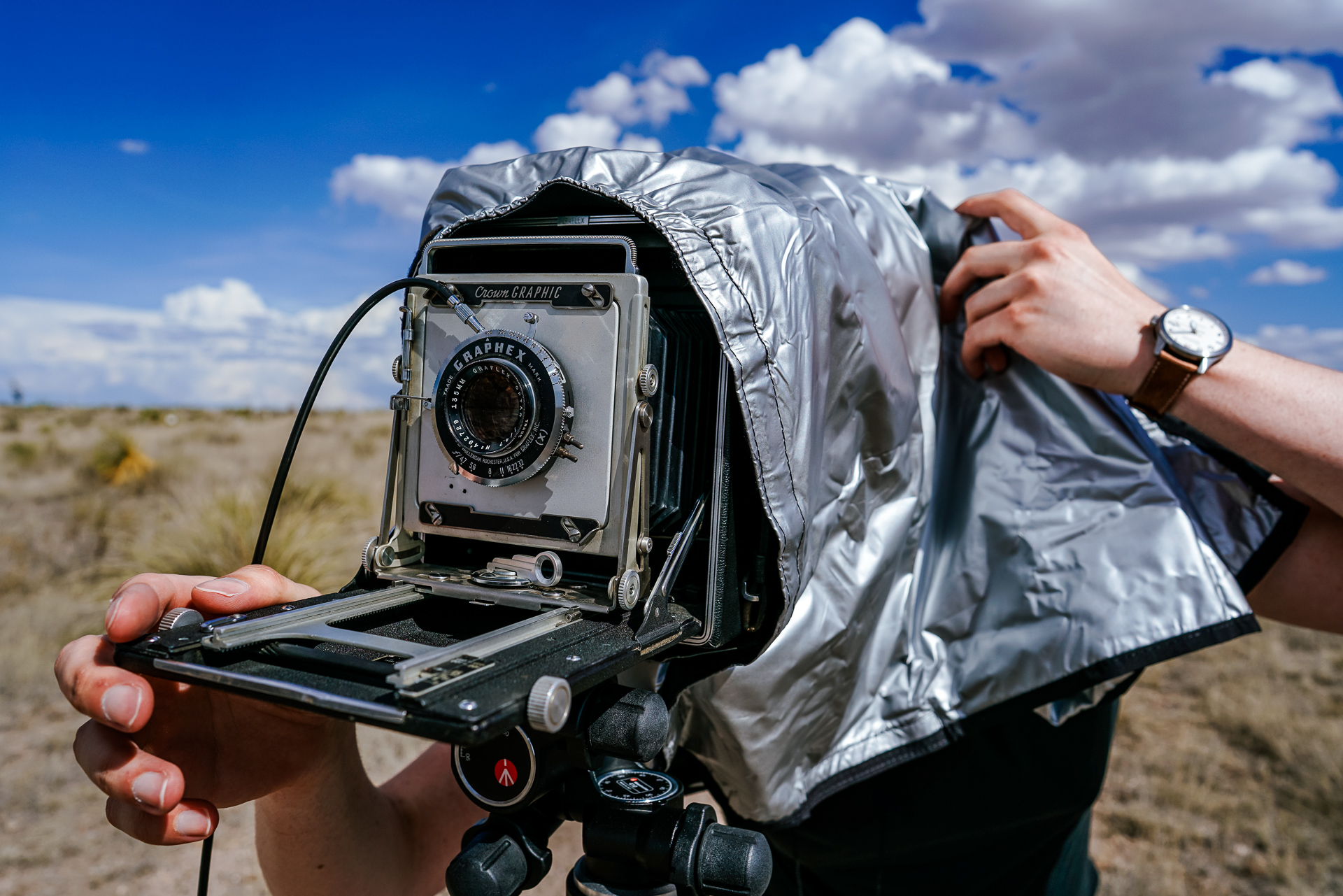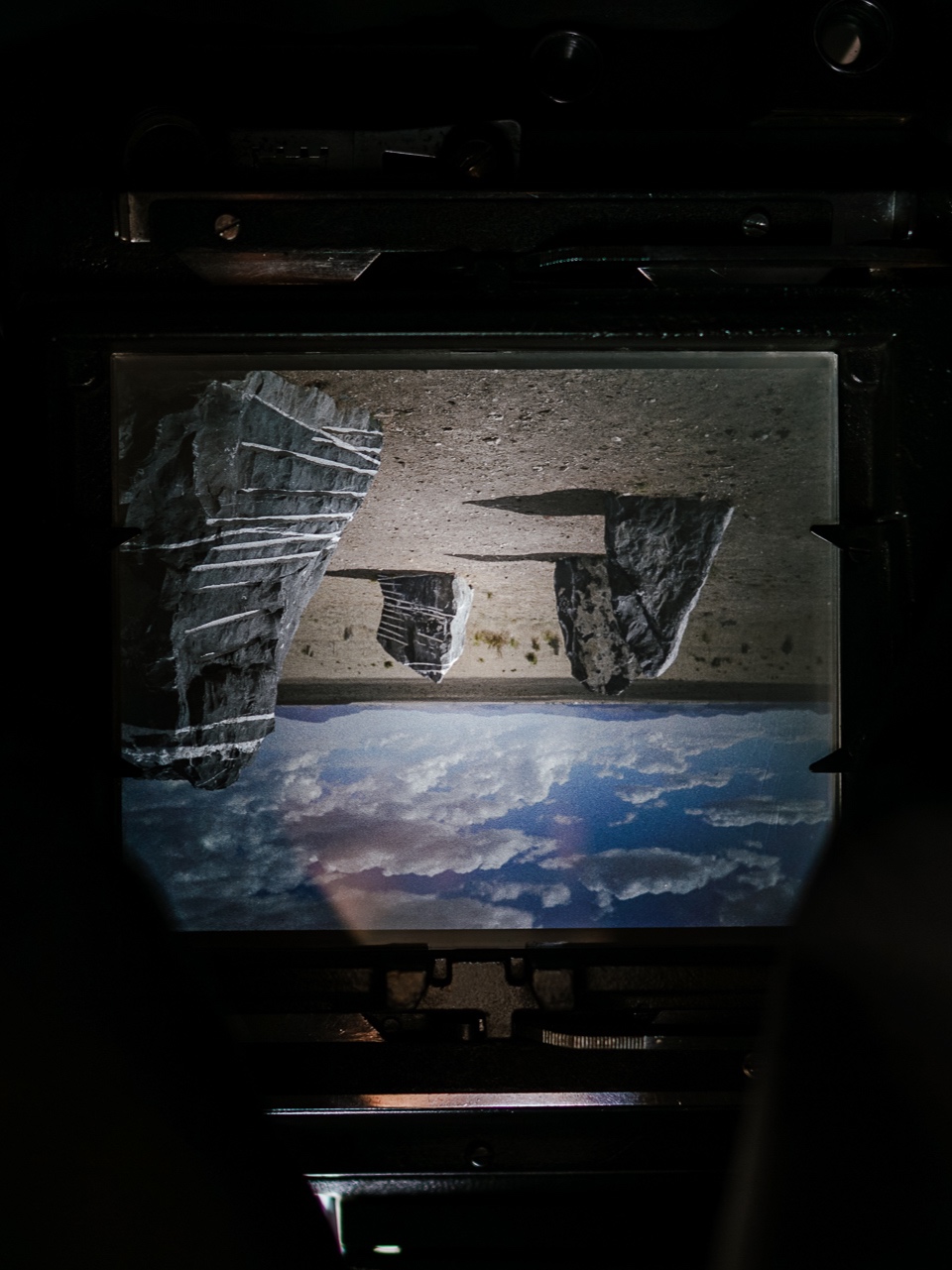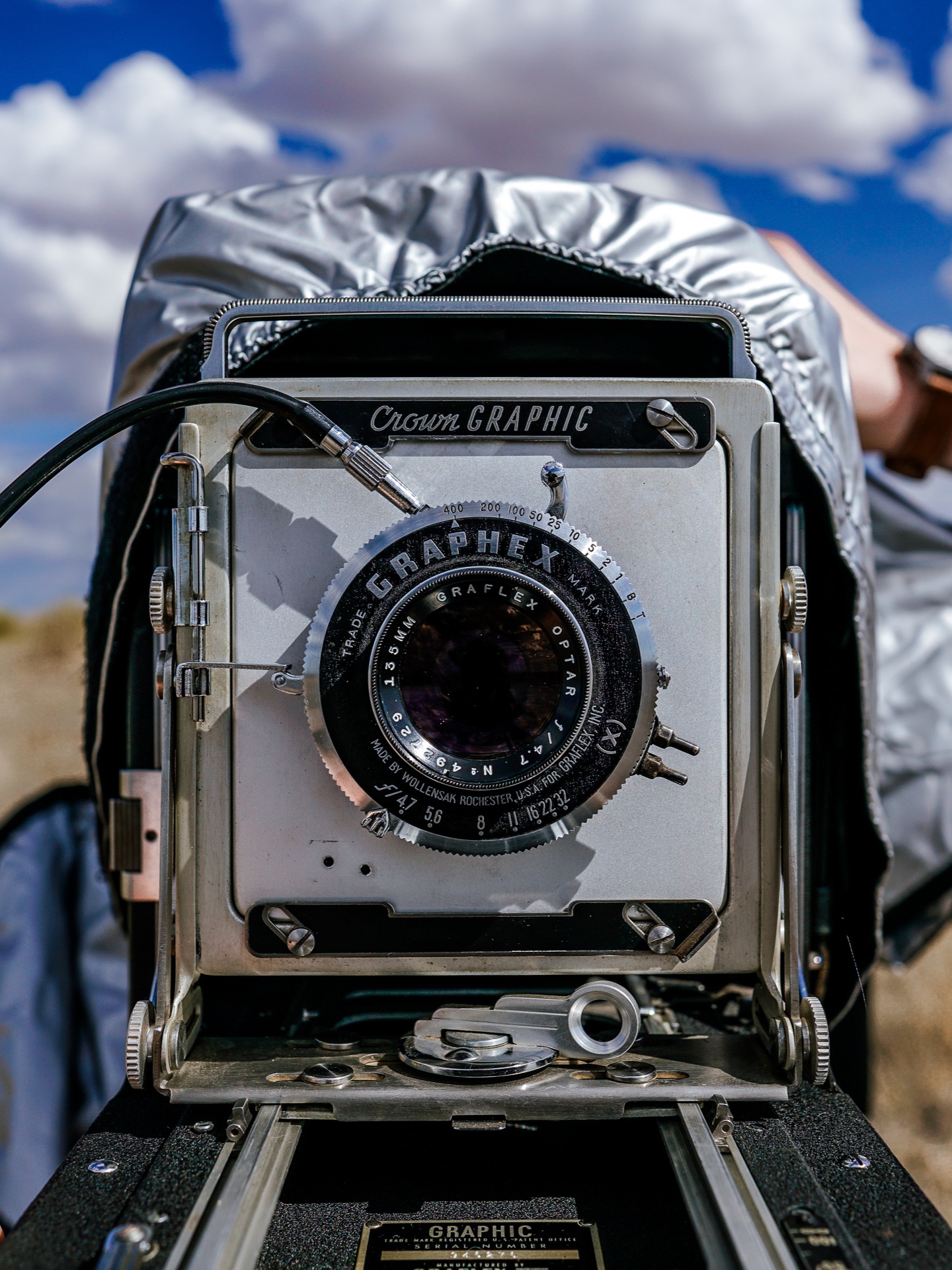One Shot

“As we worked our way across the desert, before a new moon crossed through space in quiet darkness and billions of stars filled a crystal sky, we got to spend some time with a dear old friend...”
There is an appeal to technologies that stand the test of time; those that, by virtue of their age and continued function, are a testament to the effort and thought that went into their creation.
We have a fondness for all things analog here at Muyshondt. Vinyl records. Land Rover Defenders. Mechanical watches. And, holding a special place in our hearts is photography on film.
There is an element of taking the long way around when it comes to analog pursuits.
Film photography is unforgiving. You get one shot. You have no preview in any meaningful sense, beyond your viewfinder. You can’t review your shots immediately after you take them. Shooting film, developing, and scanning it takes much time and has substantial costs.
Thusly, the process is one that is careful and deliberative. You spend time to get to know your equipment, and you work to develop a kind of precision – both in the technical operation of your camera and the artistic vision for the kinds of photographs you wish to create.
…a good photograph
inspires something deeper in the person seeing it, and brings out some quality of emotion from the scene captured…
After all, a photograph is more than just light rendered for a moment frozen in time – a good photograph inspires something deeper in the person seeing it, and brings out some quality of emotion from the scene captured. It is a story based in reality, as told by the photographer, and as felt by the viewer.
So, when we can, we shoot on film. We try to visualize the shot well before we release the shutter. We generally take only a single shot of a given subject. It helps make us better photographers across every medium, and is another brush we can use in our toolkit when trying to paint the world around us.
For West Texas, we took some time to make among the most manual of exposures using a Graflex Crown Graphic large format camera. This is a 4x5 view camera, made in the 1940s for press photography, that takes film four inches by five inches in size.
Focus is adjusted by viewing a ground glass screen with your head beneath a hood and adjusting a small knob at the front of the camera to properly position the lens. The image on the glass is mirrored left-to-right, and flipped top-to-bottom. To achieve optimum focus, you use a loupe directly on the viewing screen and adjust until everything is perfectly sharp.
To set your exposure, you meter your subject with an external light meter, then on the shutter mechanism around the lens you set your f stop (the size of the hole that lets light through to the film), and your shutter speed (how long light is allowed to expose the film for). You then close the shutter on the lens, and insert a film back, which was loaded by hand inside a dark room or a dark bag beforehand.
With the film back inserted, you remove a dark slide, uncovering the unexposed film, double check your settings one last time, then release the shutter.
The entire process takes several minutes for each exposure, and every photograph costs about $20 per frame, including film, development, and scanning.
Film renders differently than digital, and helps give a different dimension to the images captured.
But perhaps most importantly, film slows you down. It forces you to think about what you’re doing. It helps create a better photo not through the medium in its own right, but by requiring an attention to detail and continual improvement from the photographer that is absent from a more casual approach.



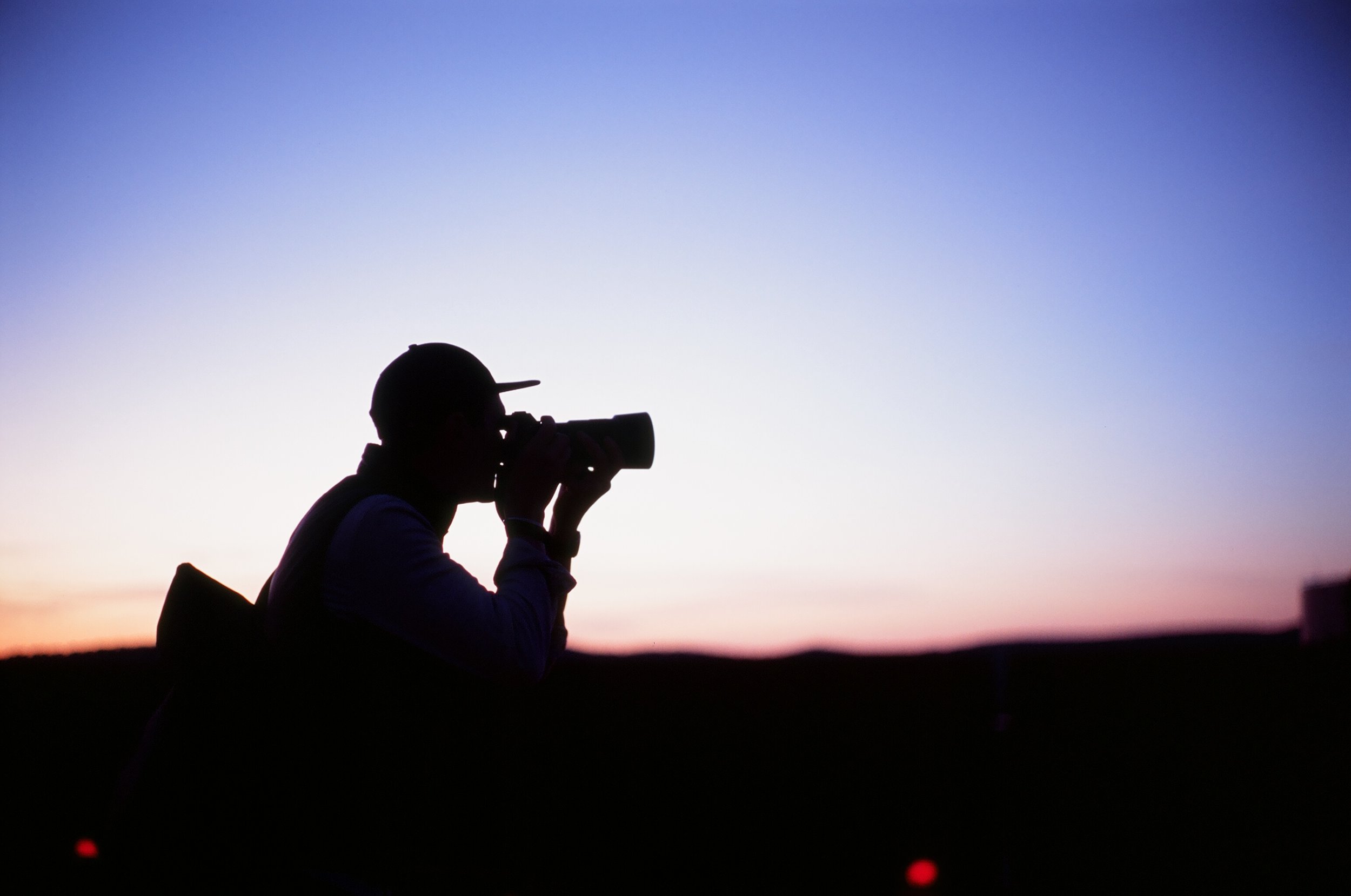
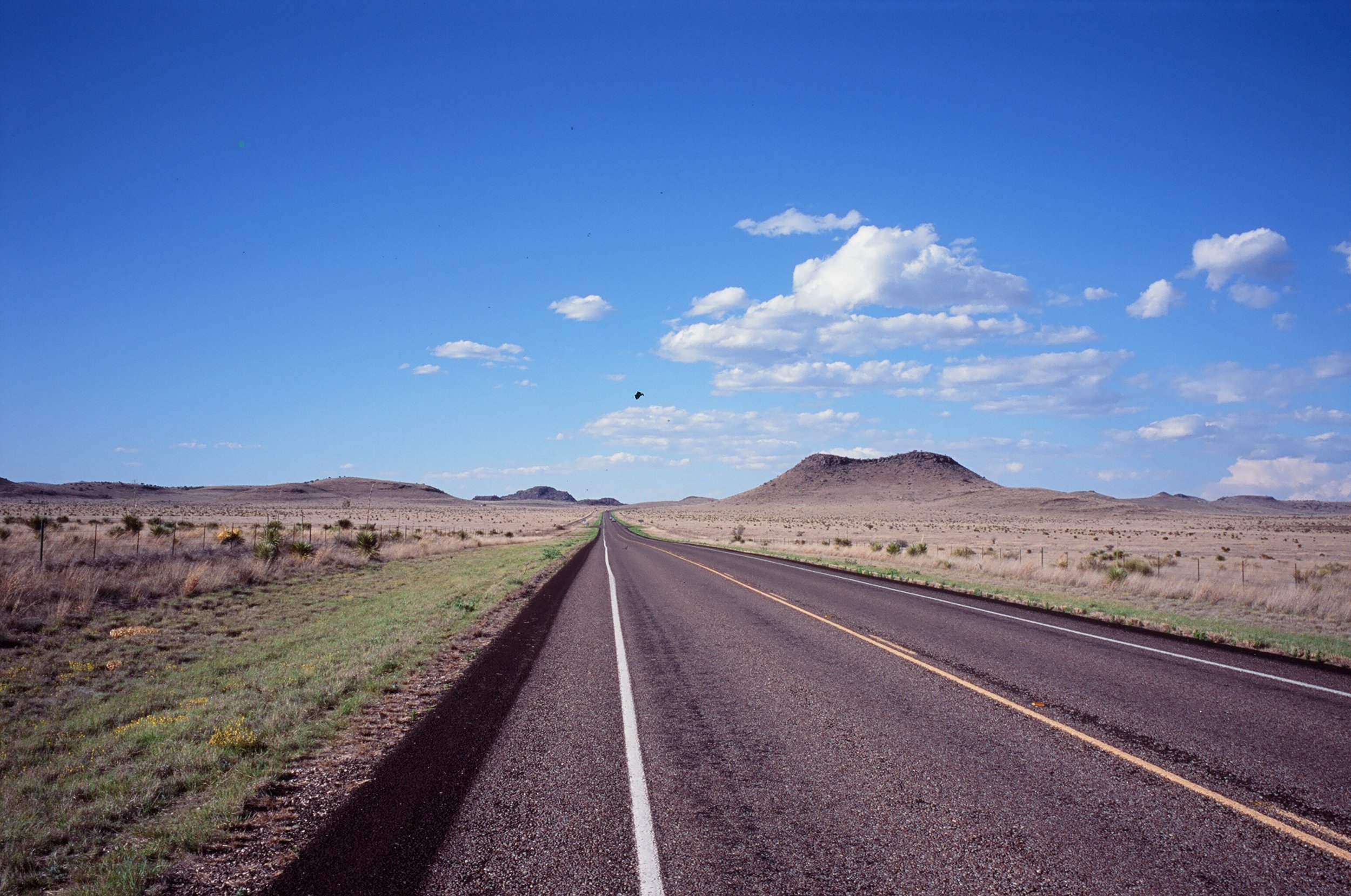
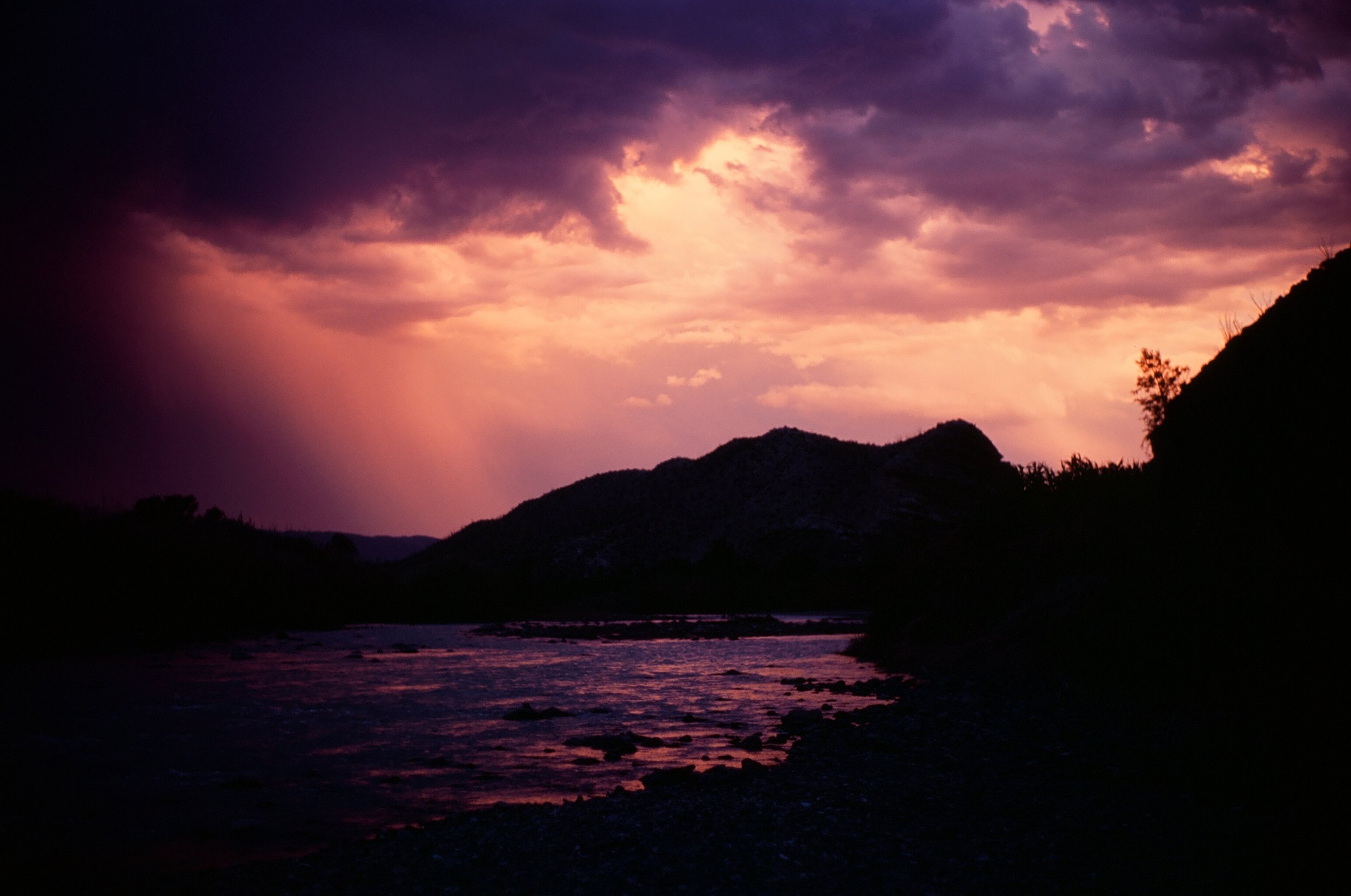
A Selection on 4x5 and 35mm Film
And so our approach is careful and analytical as much as it is artistic. It is deliberative and patient - as slow as required to get it right.
This helps us create superior images, both on film and across other mediums. Most importantly however, It helps define and sharpen a set of habits that influence our work generally, both behind a camera and everywhere else.

